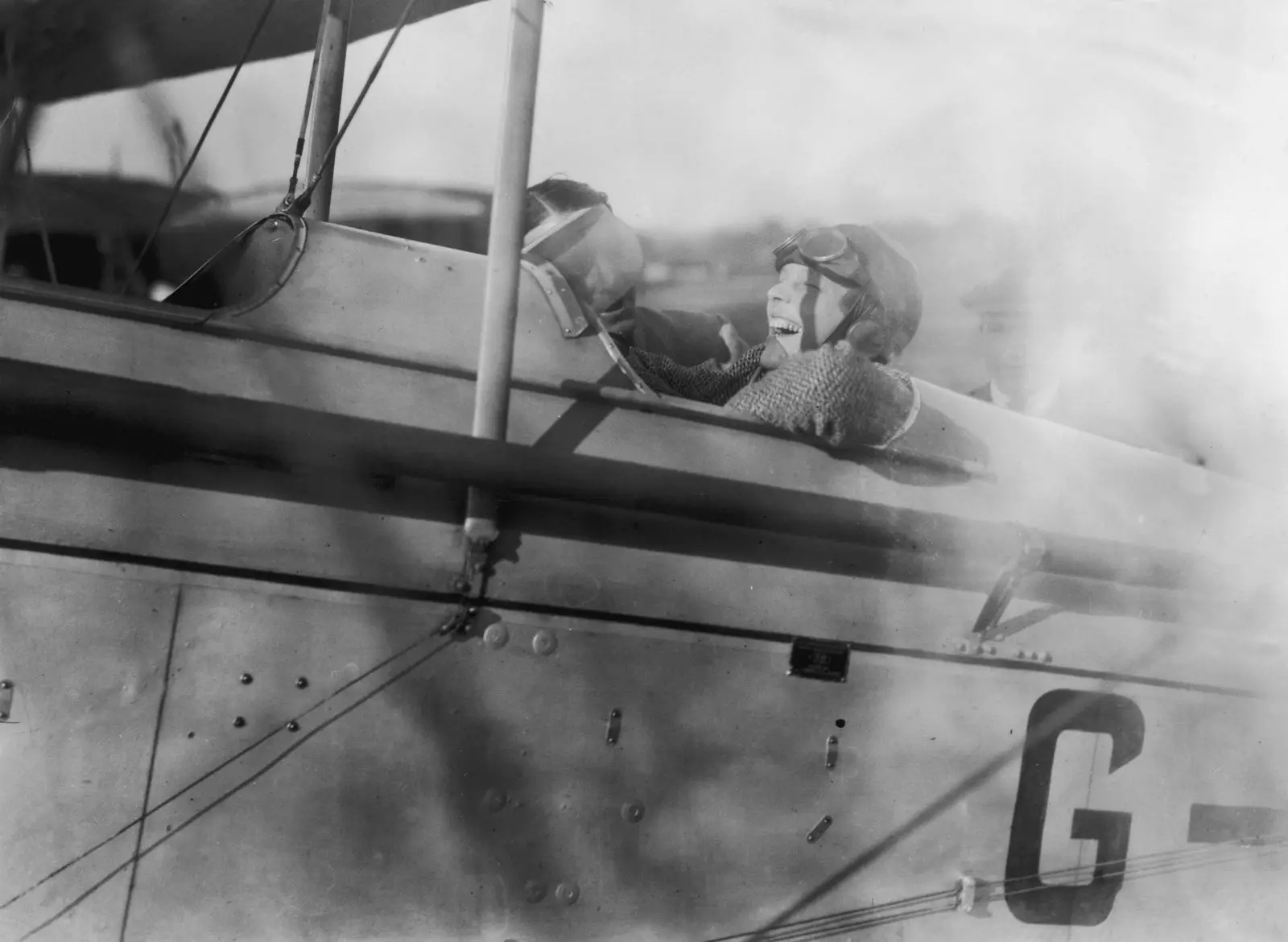
Amelia Earhart
It is already a coincidence that the first pilot in history received her license a March 8, 1910 ; a timely and early date, because the system had not yet been institutionalized. International Women's Day.
Raymonde de Laroche she was twenty-three years old when she passed the tests of the Aero-Club de France and she forgot about the theater to dedicate herself to other types of shows. "Heaven is my stage" . She was driving a winged pileup, an advanced model biplane that was conducive to accidents like the one that left her entire body disjointed. Her fright didn't stop her, and the plumber's daughter continued to perform on airshow tours. He was so impressed Tsar Nicholas II seeing her that he granted her the title of Baroness. "Flight is the best possible thing for a woman."
Possible, yes. Even if a guy like Claude Grahame-White (1879–1959) comes along and blurts out that "women are not, by temperament, made to fly, because they can be prey to panic".
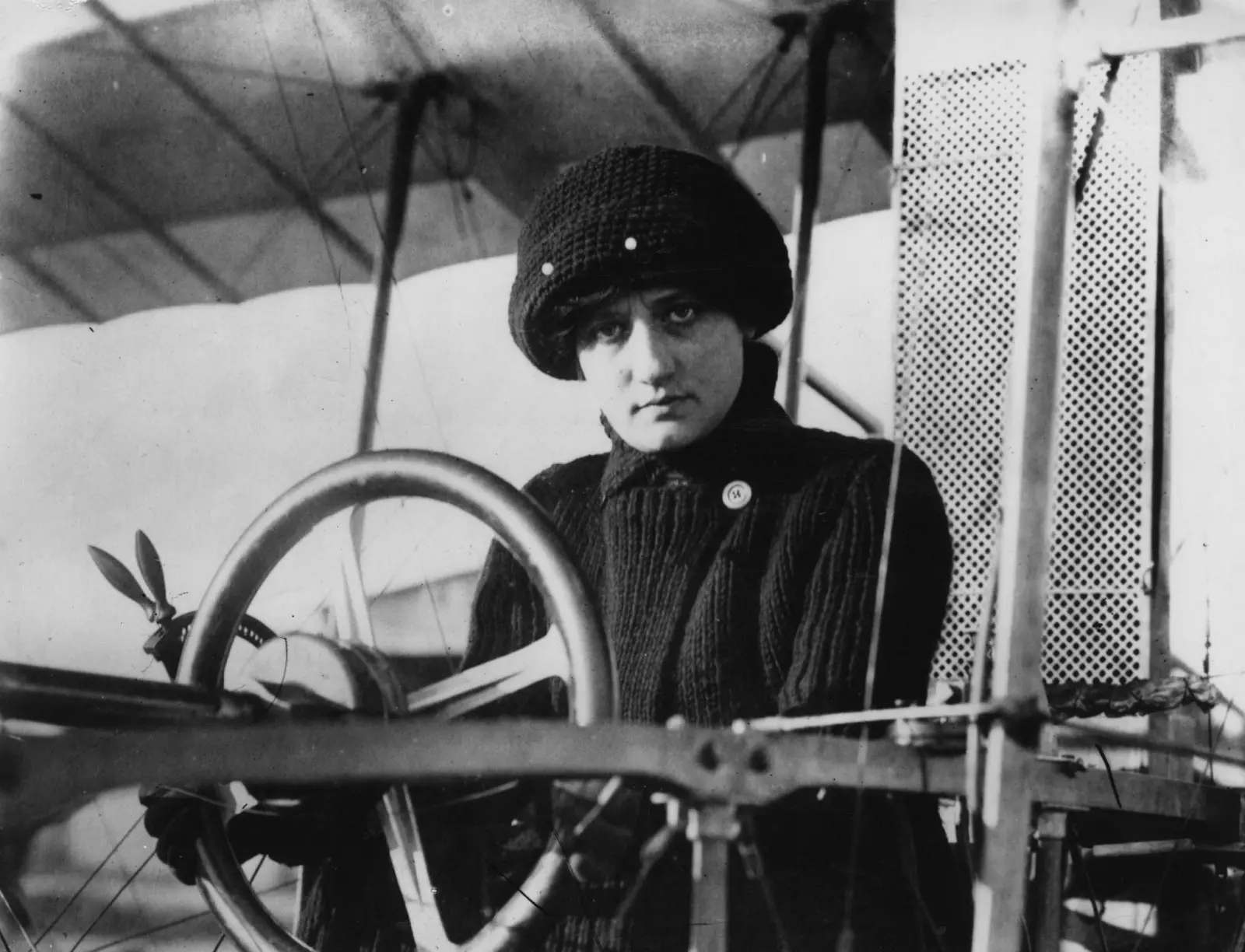
Raymonde de Laroche
I wouldn't say for Elizabeth Thible , the first brave woman who rolled up her skirts to take a ride in a hot air balloon , in 1784, she almost newly invented the artifact. Dressed for the occasion as a Roman goddess, the nineteen-year-old girl marked an aria in the sky, she was so euphoric. “Je triumph! Je suis reine…!” , she sang, stoking the bonfire so that the montgolfier would rise to a height of fifteen hundred meters, free, without ties.
“An incomparable sensation”, in the words of Sophie Blanchard she, who dedicated herself to ascents already professionally: she held the position of Air Minister with Napoleon; then with Louis XVIII. And she had the unfortunate honor of being the first woman to die in a plane crash: she crashed when the balloon caught fire in a pyrotechnic show.
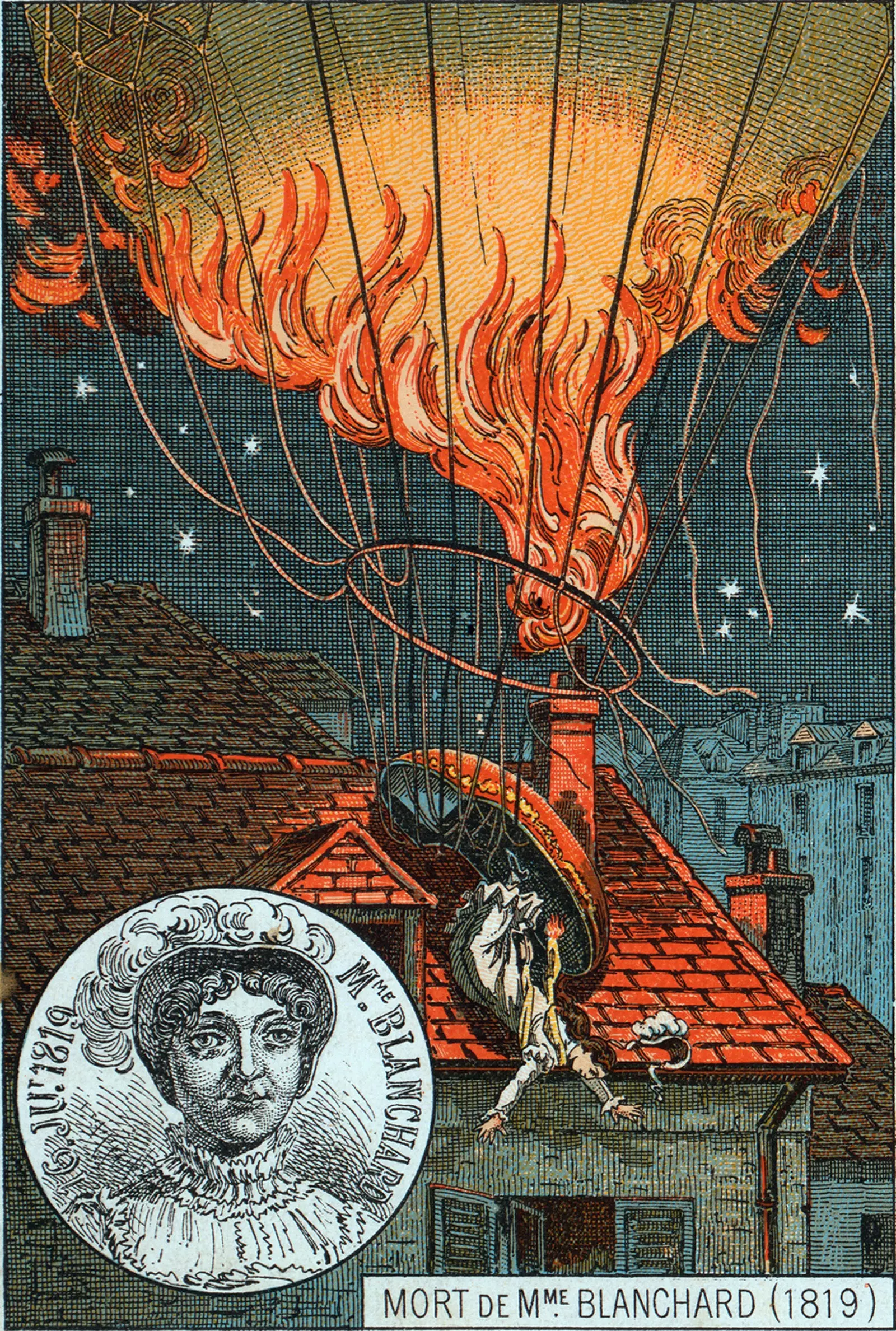
Blanchard's death
It was a risky job. A Louise Goujon, for example, she was narrowly rescued from her when she fell into the sea in Barceloneta. The balloonist – who climbed into the basket with donkeys and horses – was famous for his more than five hundred ascents in the main cities of Europe.
She also showed her skills in Madrid, taking off from the Buen Retiro gardens to land in Leganés and Chamberí. Fashion arrived in Spain and its Majesty, the Queen Regent Maria Cristina , she also wanted to try, rise three hundred meters on a royal whim , although in a captive balloon, for national security, she was not going to leave the throne an orphan.
Six months before the wright brothers premiered their device (the Wright brothers, by the way, were three, and that forgotten third was, coincidentally, a woman), Aida de Acosta she became the first aviator to fly over Paris with a motorized airship, and alone!
The half Cuban – half American – half descendant of the Dukes of Alba spent her vacations in France, and she got on the aerostat having received three classes alone ; Her instructor, however, biked down behind her, shouting directions and waving her arms like spoilers.
The displeasure of her parents was exorbitant: now no man as God intended will want to marry this reckless girl, they thought, her reputation is unhappy. That is why they hid her feat for years.
Another silent deed was that of Harriet Quimby, the second woman to obtain a pilot's license. Nobody trusted that she could successfully cross the English Channel; neither was her teacher, who proposed to supplant her in such a risky adventure.
No one would notice if she dressed in that purple, bejeweled, hooded outfit that she had designed for herself. Determined, she sheathed herself underneath two silk jumpsuits, over the woolen coat, a raincoat, a seal stole and a hot water bag on his belt, to protect himself from the cold.
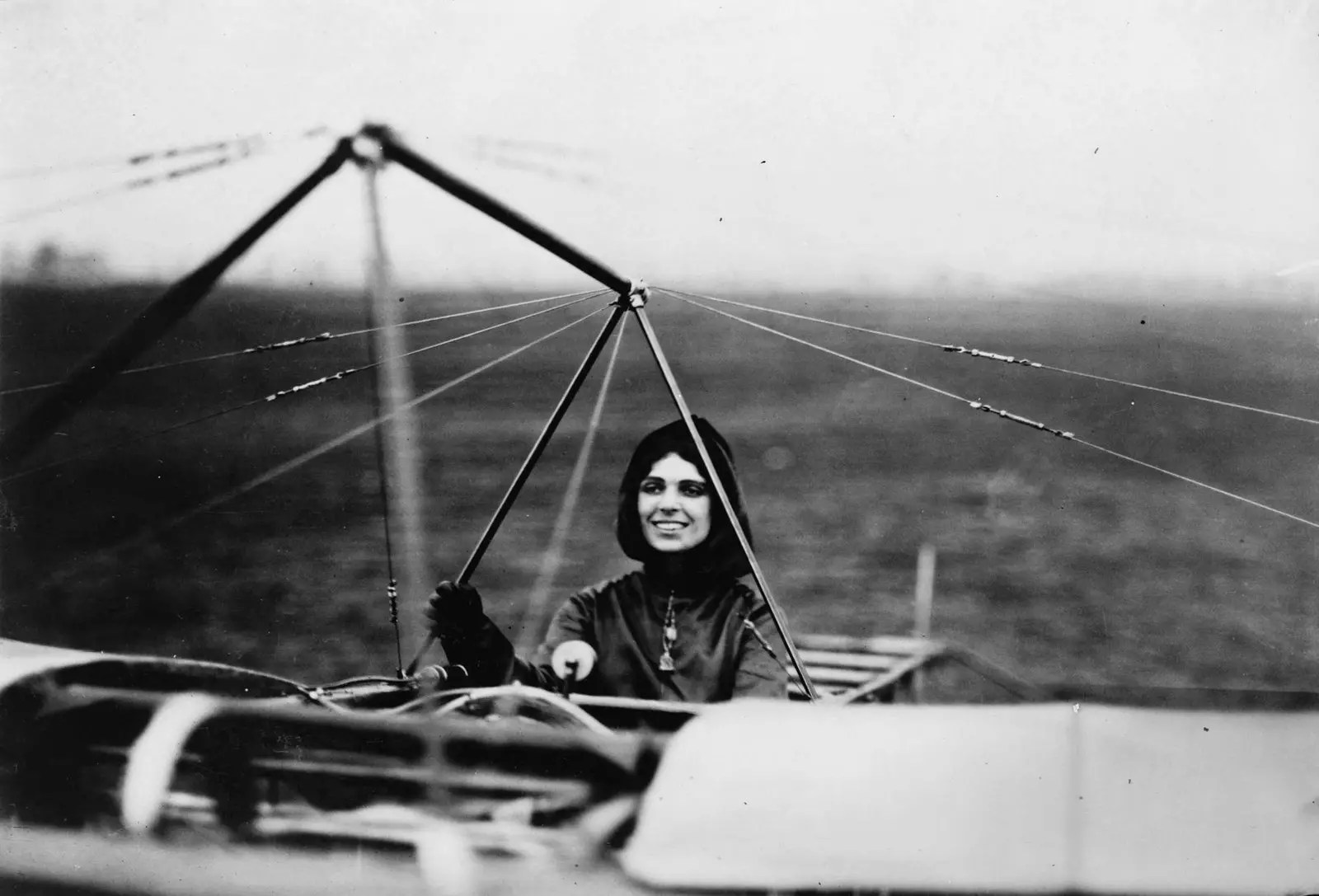
Harriet Quimby
From Dover to Calais it took fifty-nine minutes. But the success of the American company came to nothing, because that day the news of the Titanic It occupied all the covers.
Looking for new challenges, Adrienne Bolland she crossed the Andes in a Caudron G.3 . She wrapped herself up well: pajamas, a cotton combination, a mattress of newspapers... And she took precautions: a dagger, a revolver, an onion —Yes, an onion, to prevent fainting by inhaling its aroma —… Just in case, she followed the route recommended by a medium.
Three hours of tense flight and the skin cut by the zonda's slashes. "It was fantastic. It seemed to me at all times that the apparatus, dragged by the violent wind that swirled in this open-air cave, I would project myself against the walls of these abrupt walls ”. Just landing she ordered a coffee and a mirror. Nor did the French press echo.
What the newspapers did highlight is that Hélène Dutrieu will fly without a corset ; she later used it again, not out of modesty, but as protection in possible bumps.
She broke records for speed, altitude and duration , beating her competitors regardless of gender. For something of her they nicknamed him “Woman hawk” and “The human arrow”.
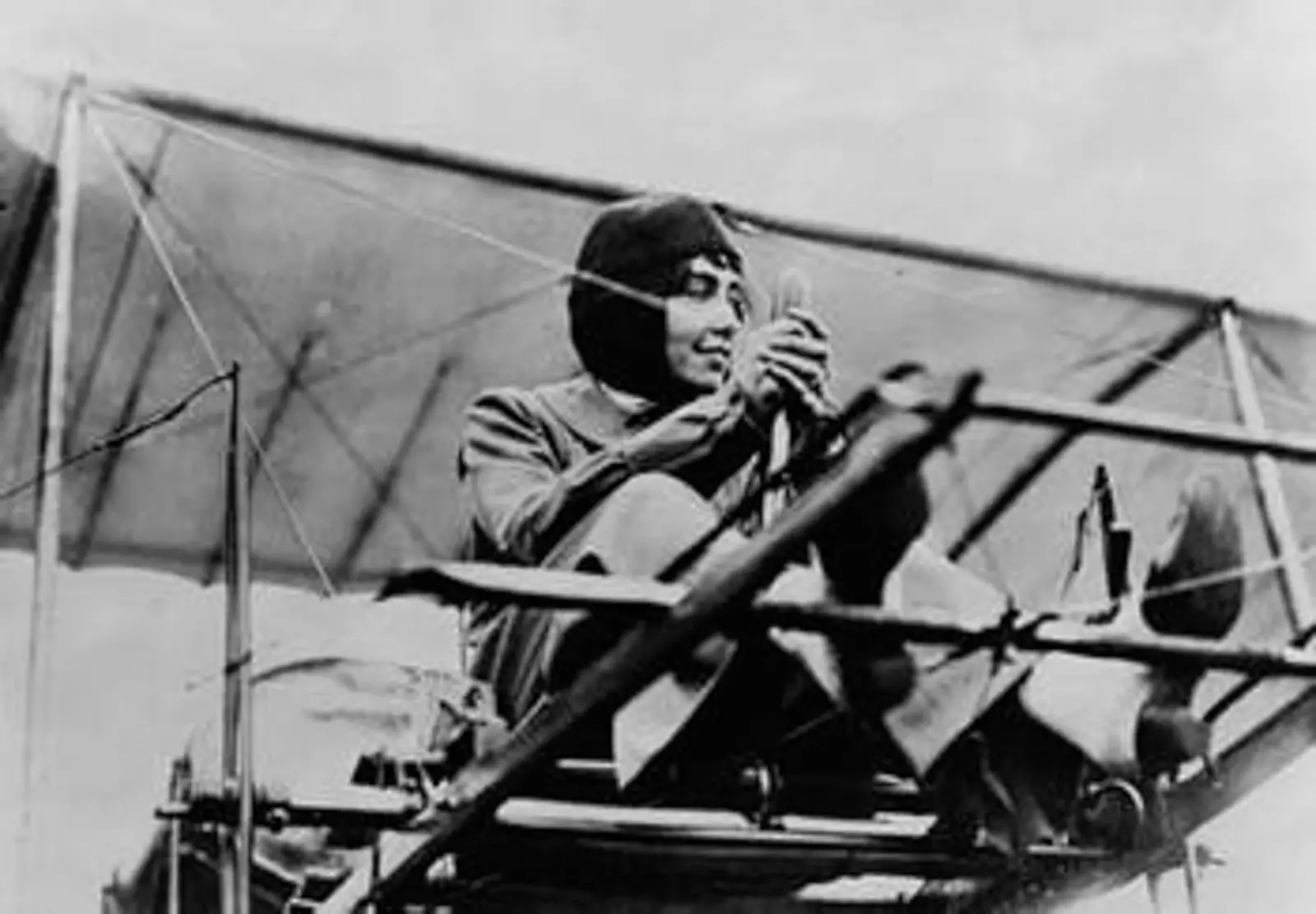
Helene Dutrieu
Her biggest rival in the air was Marie Marvingt, a versatile French woman who invented the skirt-trousers for aviators (also a skate for skiing in the Sahara, but this is out of our theme). “I am not a woman like the others”. The very brave she camouflaged her sexual identity to participate in air combat missions during the First World War l.
“When I see an airplane with the black crosses and the swastika on the tail, I have only one feeling: hate; that emotion makes me squeeze the trigger of my machine guns even more firmly ”, she affirmed, somewhat aggressively, Lydia Litvyak , the Russian ace of aces who, at the age of twenty-one, had already taken down twelve Luftwaffe punks single-handedly.
Another brave was Mari Pepa Colomer, who put his wings at the service of the Republic, piloting air ambulances during the Spanish conflict . The girl had guts: she was already seven years old, she threw herself into the void unfolding an umbrella from the balcony of her house (and the episode is before Mary Poppins). When she was old, she took her license without her mother finding out about her, until she saw her daughter in the pages of The vanguard: “First Catalan aviator”.
“I will fly or I will die!” , she had to listen to the mother of Amelia Earhart, who was asked one day: “Would she like to be the first woman to fly over the Atlantic?” Her initial excitement turned to outrage when she was boarded as a passenger! to the plane. "Like a sack of potatoes!" she pointed out.
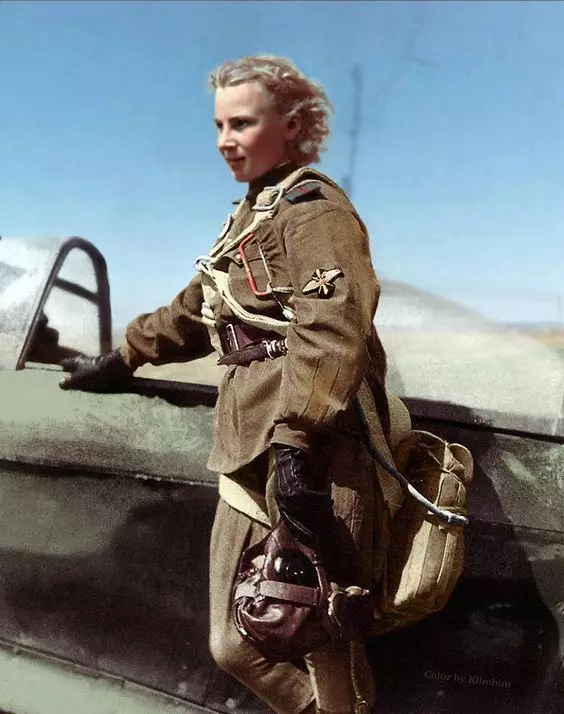
Lydia Litvyak
She was also exasperated by being compared to Charles Lindbergh. —whose wife, Anne Morrow Lindbergh He was also a pilot. She wanted to be recognized on her own merits; that's why she crossed the pond alone in a red single-seater: she left Newfoundland and fourteen hours and fifty-four minutes later she arrived at an Irish pasture.
Later, Beryl Markham she crossed it backwards, from east to west, in an even more difficult way with headwinds, no radio and practically at night. At that time, she Amelia was planning major maneuvers, ready to go around the world in a Lockheed L-10 Electra: America, Africa, Asia, Oceania… "I fly in the mist (...) I have no more than thirty minutes of fuel left (...) I don't see land." Her value was lost in some Pacific coordinate.
Jerrie Mock she completed her purpose, as if hearing the words of her forerunner: "Women should try to do things as men have done . And when they fail, their failure should be nothing but a challenge to others." With this idea was founded in 1929 the Ninety-Nines , an international organization for encourage female aviation ; the same objective with which it was born here in Spain the aviators association .
Because it is not very normal that there is only one 3.5% of female pilots in this country s (according to data from the SEPLA ). Plenty of room if you put them all together in one Airbus 340 . And that the global average is this (only India is unmarked) does not console
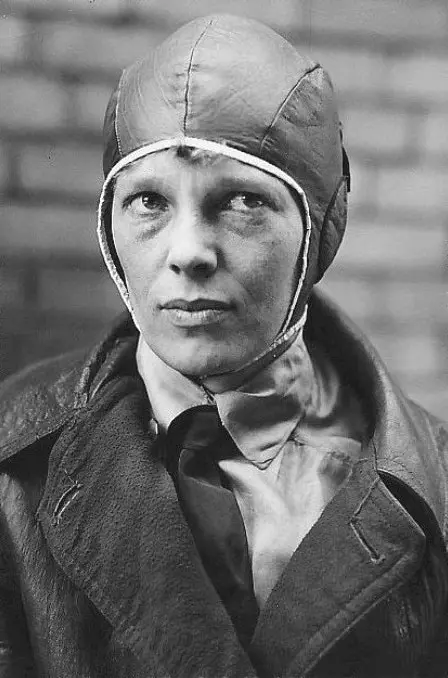
Amelia Earhart
In 1926, the International Air Navigation Commission he discouraged trading companies from hiring women as commanders. “Better go back to your house, to your home. Have children. Surely it will be more useful to your family." they had to listen.
So they had to do pirouettes —literally— to earn a wage, dedicating themselves to acrobatics and breaking records: Helene Boucher she proclaimed herself the fastest person on the planet when she reached 445,028 km / h; palm surmounted by Jackie Cochran and Jacqueline Auriol who broke the sound barrier on board a reactor.
Helen Richey she achieved the endurance record after spending ten days in a row tumbling between clouds and stars; but when she managed to enter Central Airlines could not stand the misogyny of her colleagues, that they would not let him fly without the right atmospheric conditions. "I'm not just a pilot for good weather!" She ended up resigning.
American Airlines did not entrust its Boeing to a woman until 1973, Air France in '74, British Airways in '87 , in the 88 Lufthansa …
Bettina Kadner started the engines in Spain; she worked since 1969 for the now defunct spantax . She was the only passenger aviator until 1985,** when Iberia signed María Aburto (M)**.
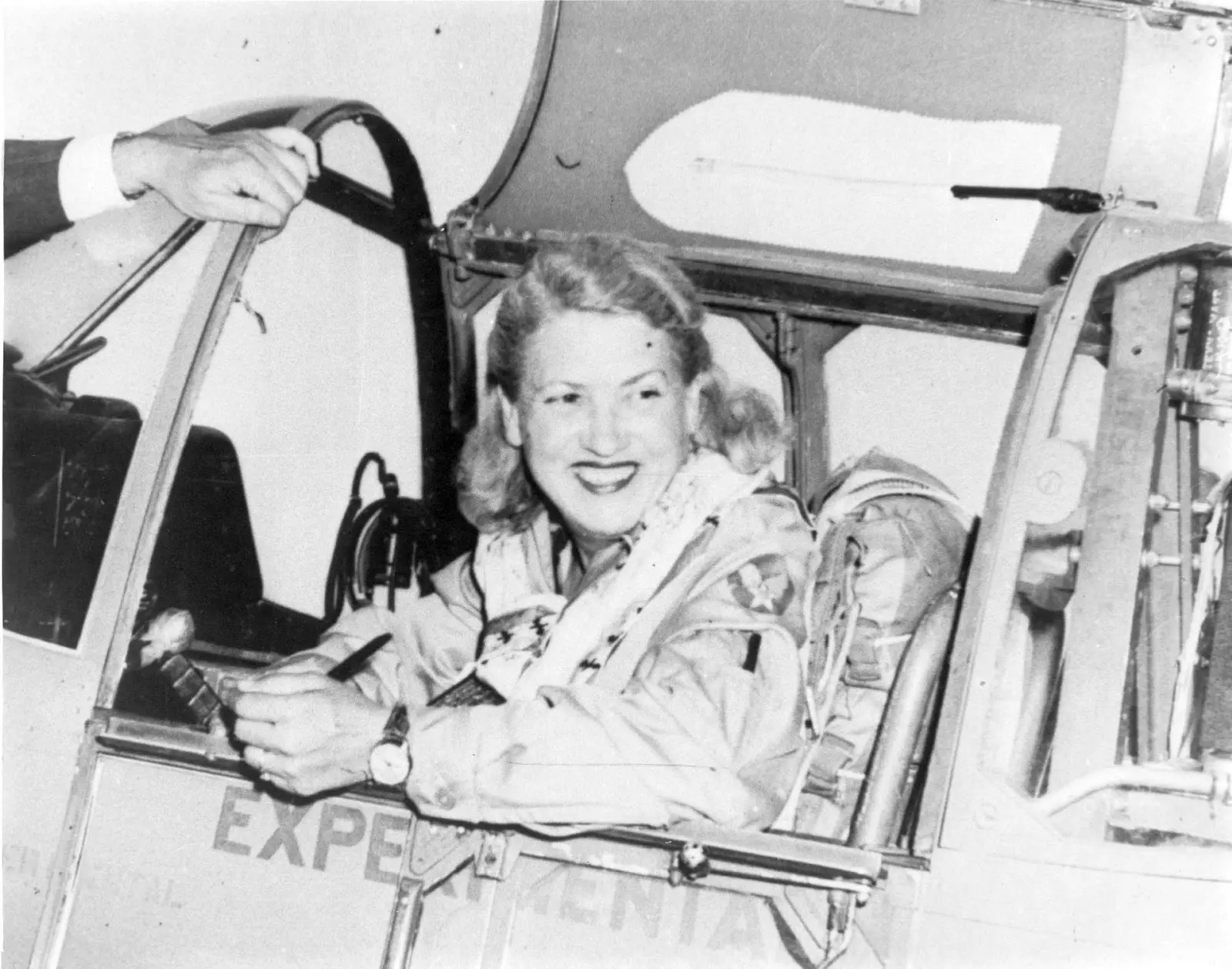
Jackie Cochran
—M: Why are we so few? Easy. How many women are there truckers, bricklayers, excavator drivers, crane drivers, sailors? They are simply professions that attract women less. We are different at all levels, emotional, intellectual, instinctive... And that is reflected in career options, among other things. I think that, if in more than thirty years the number of women and men pilots has not been even remotely equal, it must be for a reason. In my opinion, it will never equal.
—Vanesa de Velasco, founder of the Aviadoras (V) association: "There are few of us because, at the beginning, the airlines were nourished by soldiers from the army, and then there were no women in the army."
—M: It was a somewhat disturbing novelty to those military men that a woman sat in the copilot's seat for the first time in their more than extensive flying experiences. The beautiful thing was that after a day or at most two, her distrust vanished completely. In many cases, the worst were the pilots' own wives; they were the ones who most opposed. I remember some extreme case of insults or threats , but the truth is that they went in one ear and out the other...
**—Irene Rivera (I) ** : There is also an economic barrier. I keep paying for my helicopter pilot course, I took twelve years ago and cost me 60,000 euros.
—Consuelo Arto (C): The plane ticket is now worth between €120,000-140,000 ; but to be able to work you need a permit, which is around 30,000.
-YO: A rating is a specific course that is requested for each model of aircraft. It is as if to drive a BMW you had to get a different license than to drive a Ford or a Tesla.
—C: And with this you get into a company to earn 1,000 euros a month, roughly.
—M: I became a flight attendant at Aviaco to pay for my studies and flight hours. I have always felt proud that my training did not cost anyone one peseta of those of that time. When I was eighteen I went to Four Winds Flying Club with parental permission (at the time we were eighteen we were not yet of legal age) and I started the private pilot course, in a fabric and wood plane.
—V: If only there was a public university…
—C: There was: the ENA (National School of Aeronautics).
—Loreto (L) : I was from the ENA! It didn't cost me anything, not even the photocopies. I don't know why it disappeared; furthermore, just when the socialists arrived…
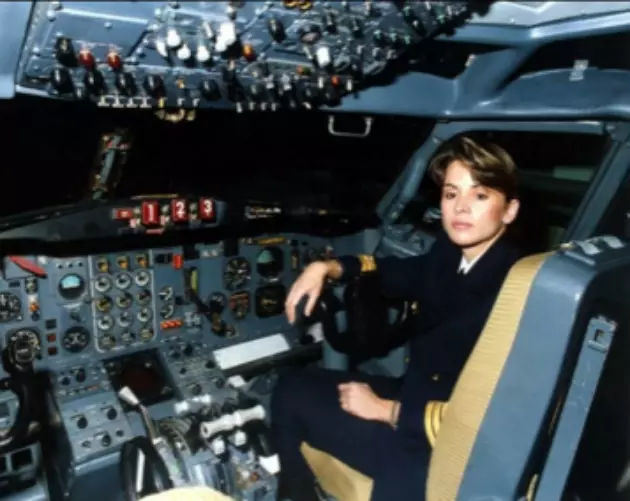
Maria Aburto
** Easy Jet provides credits of around £100,000 for training**. The aid is part of the Initiative Flying with Amy Johnson , a program inspired by the first aeronautical engineer in the United Kingdom. Apart from taking the title, l The girl flew alone from England to Australia, traveling twenty thousand kilometers in sixteen days.
And this being a novice, with at least eighty-five hours of flight time in the glove compartment of a used plane. Her father lent him the six hundred pounds that cost that Havilland DH.60 Moth (the two-seater can be seen in the science museum london ) .
Recruiting the Amy Johnsons of the 21st century is the purpose of the British airline. The plan: that by 2020 20% of its new pilots are women, so scarce in the control of commands as numerous in the positions of stewardess today.
This would make it possible to adjust a salary gap that, without being discriminatory, it is unequal , with many earning a pilot's salary ($123,139 a year) and many earning a flight attendant's salary ($123,139 a year). $33,050 ) .
—C: And then there is the matter of family reconciliation, because when I started there was no reduction in working hours...
—M: I remember the anguish of having to go offline for four days, at that time, without cell phones, and leaving a sick baby at home...
—C: Y or I took tickets from my mother and my mother-in-law to take my little son, that at four months he was already flying (and no, he has not come out as a pilot). Then, with the second child, I stopped collecting and contributing to social security, they told me that the pregnancy was a self-harm! Since I was very vindictive, I took the case to court and won. Will you believe that they didn't pick up more women in that company? But this was twenty years ago... Now maternity is contemplated in the agreements, and even though you can't fly because you're pregnant, you continue to work as an instructor and receive the base salary.
—I: Another problem is that there are no referents.
—V: I had never heard of Beryl Markham, or Amy Johnson, or Amelia Earhart...
—I: Society does not associate women with the profession of pilot, but rather with that of stewardess.
That is why the aviator of Afghan origin Shaesta Waiz has traveled the five continents in a Bonanza A36 , to motivate girls around the world, showing them that if a penniless refugee girl has traveled 45,000 air kilometers alone, they can also study a technical career and take flight.
—V: The important thing is that the girls know that they are also worth piloting, touch a plane and see us dressed in uniform...
—C: We used to wear a man's uniform...
—M: At Iberia they asked me if I wanted any changes to the suit, but at that time the one everyone was wearing seemed comfortable to me and I didn't ask for anything special. And so I continued for many years.
Specifically, until 2006, when the airline adapted the pants to the feminine forms , the double-breasted jacket was replaced by a straight cut, more fitted shirt and a complementary bag.

Vanessa Velasco
—V: You have to change stereotypes.
-YO: As a child I wanted to be a fighter pilot... Perhaps because of the stories my mother told me: she lived through the war as a child, and she would stare at the planes instead of hiding in the shelters, thinking, damn, what she would give to go there up, even if they threw me like a bomb later... In the end I ended up as a patrol leader in the General Directorate of Traffic, in the Pegasus radar, the one who gives you the fines.
—V: I have been in Iberia for sixteen years; my father was also an Iberia pilot and he always wanted me to be.
—C: Like me, what my whole family is involved in the world of aviation. By telling you that I got my flight license before my driver's license and I had to go by metro to Cuatro Vientos...!
—M: It seems like you are born with it, because, from where I can remember, the fascination with flying was there. As soon as I was old enough to go out alone I would go to Barajas to contemplate those fascinating monsters with wings that, taking a run, rose through the air in a way for me then incomprehensible.
—L: In my case it was because one day I jumped on a sailboat...
—V: A sailboat is a glider with no motor.
—L: Until they told me, I had no idea that one could do this...
—M. I retired in 2015, with about 15,000 hours. My last flight was bound for Tel Aviv, in the middle of the conflict, with even a missile crossing . One of my main tasks was to reassure the crew as much as possible. I hope I have succeeded.
-YO: My most difficult flight was entering Malaga airport from Almería: we got taró, the fog that comes from the sea, and absolutely nothing could be seen a meter away. We train every six months with simulators, and the capacity we have to react is brutal.
—V: Driving such a powerful machine makes you feel free.
M: I miss it. I miss flying to and through a cloud ceiling, hovering like an eagle over a night-lit Paris, see sunrise over the desert...
—L: Crossing the Andean mountain range just at dawn is spectacular, I will never get tired; you pass very close to the mountains and, when they are snowy, it is wonderful, how they turn pink with the sunrise... But for really beautiful flights, those you go with nice people.
RECOMMENDED BIBLIOGRAPHY TO FLY HIGHER
They conquered the sky: 100 women who wrote the history of aviation and space, by Mark Bernard (Blume, 2009).
Between the clouds , by Sarah Bernhardt, who was a fan of balloon travel (SD Edicions, 2016)
West with the night , by Beryl Markham (Asteroid Books, 2012)
the witches of the night , by Lyuba Vinogradova, about the nearly six hundred female Soviet fighter pilots who fought against the Nazis (Past and Present, 2016)
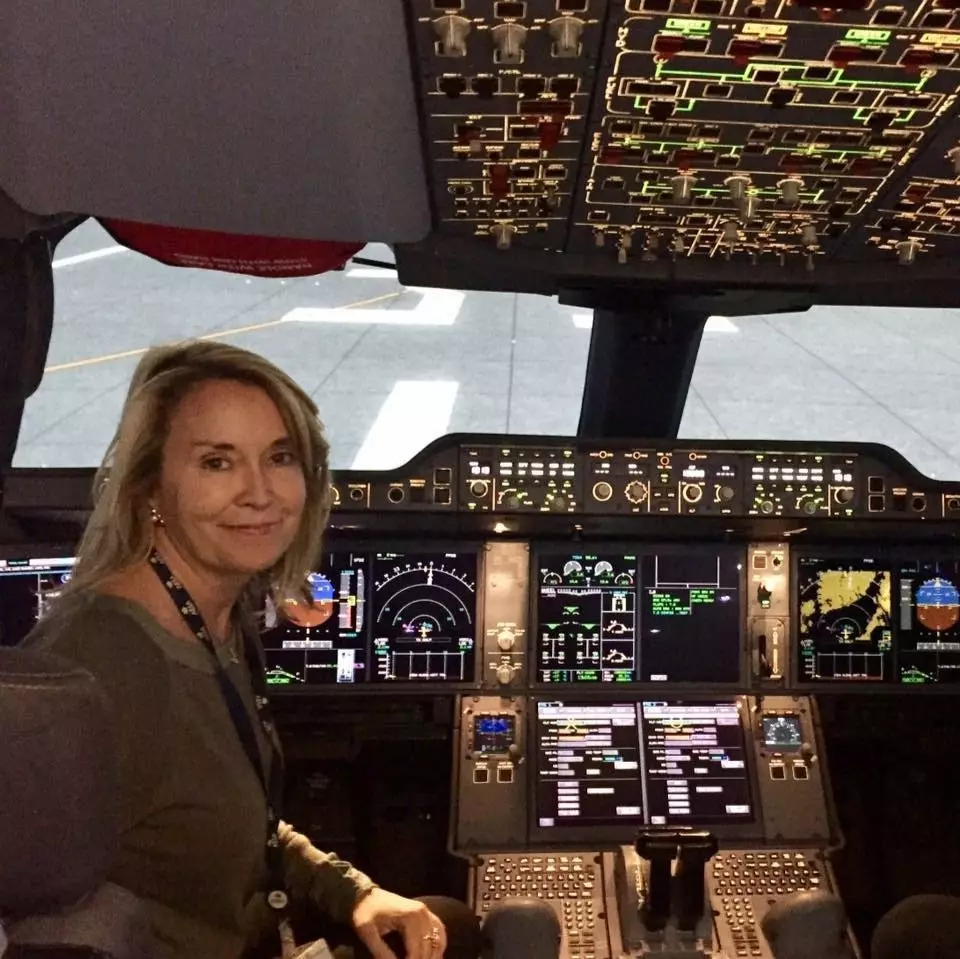
Consuelo Arto
